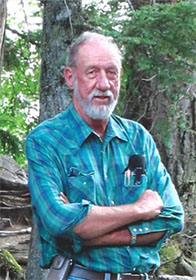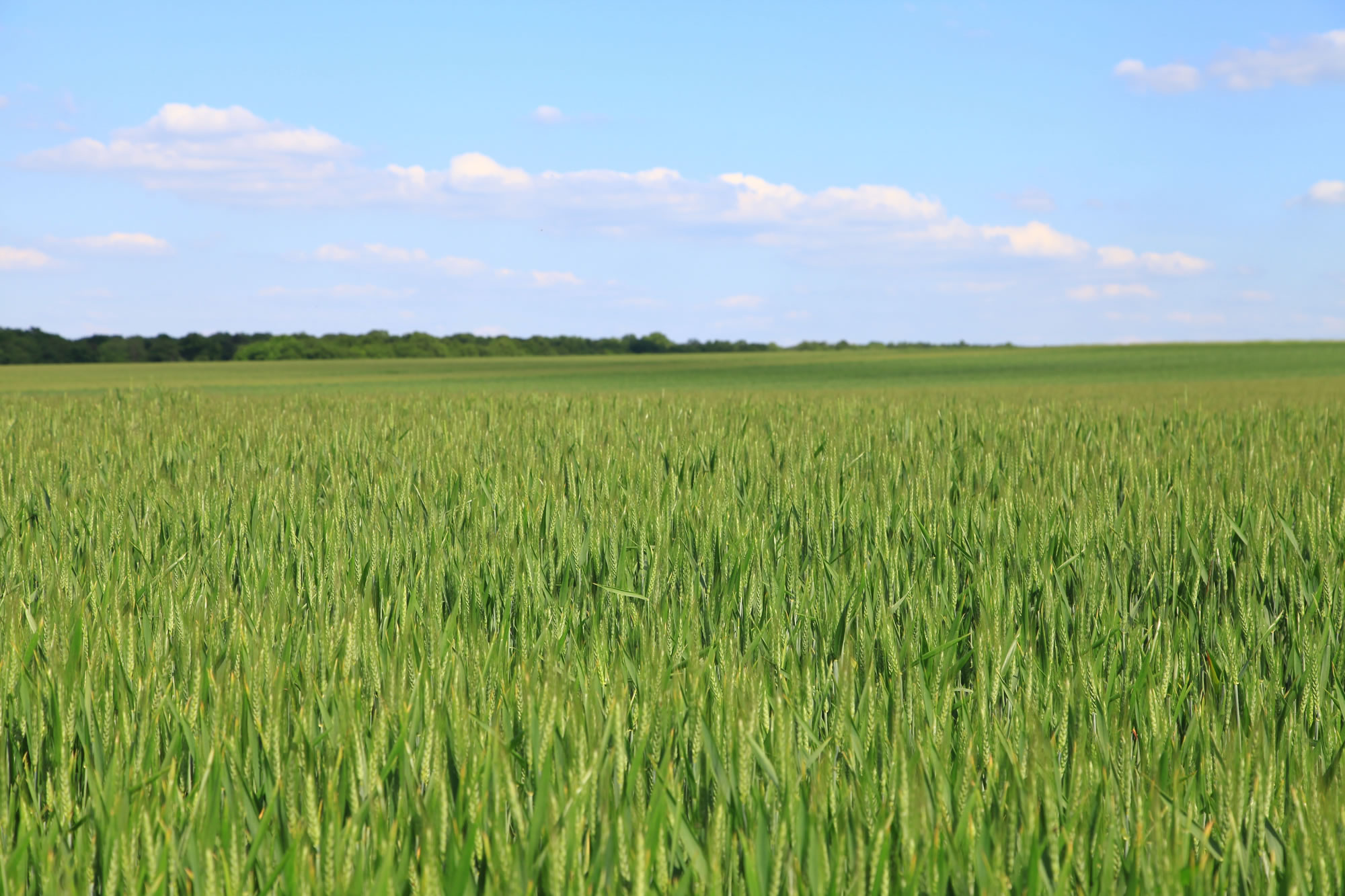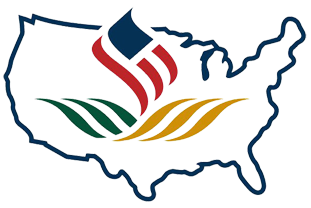The U.S. Custom Harvesters Hall of Fame
INDUCTEES OF USCHI HALL OF FAME
 Forrest Tupper - (2017)
Forrest Tupper - (2017)
C. Forrest Tupper was born the youngest of seven children on a rural western Kansas homestead in 1945. After graduating from Weskan High school at the age of 17, he moved to Goodland, Kansas, with his older brother. While working at the local paper as a typesetter, the basketball coach from Central Christian College came in to place an ad. Seeing Forrest standing there at 6'8" tall, he offered him a scholarship. Forrest then needed a job where he could save some money over the summer to pay for college and custom harvest offered him that opportunity.
He decided to join the crew of Marion Farr out of Goodland. Marion Farr had a Super 92 Massey combine which they loaded on the back of the grain truck to haul from job to job. Farr Harvesting was a small operation and did not have a mobile crew trailer. Forrest recounted stories of staying in farmers’ basements or barns while the crew traveled the harvest route.
After cutting with Farr for two years, Forrest was hired as a crew foreman by Loren Unruh out of Great Bend, Kansas, in 1966. That operation was much larger and had four GMC trucks and four new C-2 Gleaner combines.
Forrest worked for Loren until he was drafted into the Army in 1968. He took his leave from the Army in 1969 and spent it on the harvest run. After returning from his service in Vietnam in 1970 he purchased the combines from Loren and they became business partners.
Forrest met Janie Showers after his return from Vietnam in 1970 and they began dating. The couple were married in 1974, which was the same year that Forrest completed his degree in Zoology from Bethel College in Newton, Kansas. Janie went along on the harvest run every year since then. She prepared three meals a day for the crew as well as being a gopher for parts runs and raising their two boys, Grant and Garen. When asked why Janie wasn't running a combine Forrest would reply, "Our stomachs are more important. I can always hire a guy to run combine."
During the 1970's, Forrest expanded his operation to six combines, all Gleaners. Tupper/Unruh Harvesting was one of the first to add a second fuel tank to the Gleaner combines so the crew didn't have to stop for fuel as often during the long days in the field. He started his run in Olustee, Oklahoma and worked all the way to the Canadian border before returning to Kansas for fall harvest. This run would be expanded in the 90's to include the north part of Texas and a substantial fall harvest run in South Dakota. It was during the early 70's that Forrest earned his pilot's license and purchased a Cessna 172. He used this plane to travel around the country and meet with his customers. Many members of the crew who flew along on these trips affectionately referred to the aircraft as "the flying go-cart." They told stories about landing on and taking off from several different farmers’ driveways, a tactic which may be frowned upon by today's FAA.
Forrest and Janie had their first son in May of 1977. Grant joined his first harvest run at two weeks old. Both Grant and Garen would become integral members of the family harvest operation as they grew up. They started running combine to relieve the crew members at the age of seven and by the age of thirteen, the boys were able to participate in all aspects of the harvest run.
Forrest bought out the entire harvest operation from his business partner Loren Unruh in 1980. He then switched to Massey combines in 1983, a move which earned him a spot on the cover of the Kansas Farmer that year and a full-page advertisement for Massey-Ferguson. Tupper Harvesting ran Massey 850's and 860's until 1988 when Forrest switched to John Deere. He ran John Deere combines the rest of his harvest career.
The most important part of the business for Forrest was the people. Whether it was his customers, other harvesters, or his crew members, Forrest fomented strong relationships with everyone he worked with. He was a man of his word who lead by example and was guided by his strong Christian beliefs. His witness over the years influenced several of his crew members to join the church themselves. A handful later became pastors.
In the 60's and 70's Forrest hired mostly college boys to work the harvest run, several of them being his classmates from Bethel College. Many of these guys enjoyed the experience enough to return for several harvests. Forrest began working with the H2-A and J1 visa programs in the late 1980's and by the early 1990's, these foreign crew members made up the majority of the guys he hired. Tupper Harvesting employed men from 13 different countries over the years with a lion's share of them hailing from New Zealand, South Africa, and England. Forrest completed all of the paperwork himself for each of the H2-A visas. A process which put him on a first name basis with many of the government officials who grant these requests. Forrest also served on the legislative committee for the USCHI for the last five years of his life.
Forrest, or Tup, as he was affectionately called by his crew members and friends, was known as the gentle giant for his endless patience and his calm demeanor. He assisted many of his crew members each year in their quest to earn CDLs. This proved to be a tedious process with the ever changing legal requirements. The endeavor was lofty when combined with the fact that many of these crew members were overcoming a language barrier to take the written test and several had never driven a semi before they came to the States. Tup took a personal interest in each of his crew members. He knew that for many this would be their only experience in the United States.
In addition to providing them with a wide range of harvest experiences, he took time out of the run to show them the many historically relevant sites they passed on the way such as: Yellowstone National Park, Glacier National Park, The Custer Memorial at Little Horn, and Mount Rushmore.
Such diverse crews were so effectively managed because Forrest was an amazing teacher. He said many times that teaching a new crew member what needed to be done on a harvest run was mostly about patience. That, and never underestimating how quickly instructions could be lost in translation. Forrest always started with the basics of machine maintenance such as checking the oil, the radiator fluid level and greasing. Over the years, he stressed how daily maintenance saved countless dollars in both down time and repairs. He never gave up on someone who was struggling and he walked the difficult path with all of his crew, year after year. It was his perseverance that stuck with many crew member's years after they had been on a harvest run.
Forrest and Janie felt it important to provide a family atmosphere for all of their crew members. They considered each of their workers as family even after the harvest run was over. It has been recounted several times over the years that this sense of comradery helped many crew members overcome the homesickness that comes with being half-way around the globe from your place of birth.
Forrest felt that being a custom harvester was more than just a business, it defined who he was. He was proud to be able to provide a service that was needed not only by the farmers for whom he cut, but to everyone in the world who benefitted from the fruits of his labor. He always lead by example and was working side-by-side with his crew up until the day he passed. On November 24, 2015 in a field outside of Carthage, South Dakota Forrest was called to be with the angels just a few days after finishing his 52nd harvest run.
The annual arrival of Forrest and Janie had become a welcomed site in communities from the panhandle of Texas to the Canadian border. His quick wit, hard work ethic and easy smile will be missed by all those who knew him. It is this legacy that makes him a fitting inductee into the U.S. Custom Harvesters Hall of Fame.
Forrest Tupper




